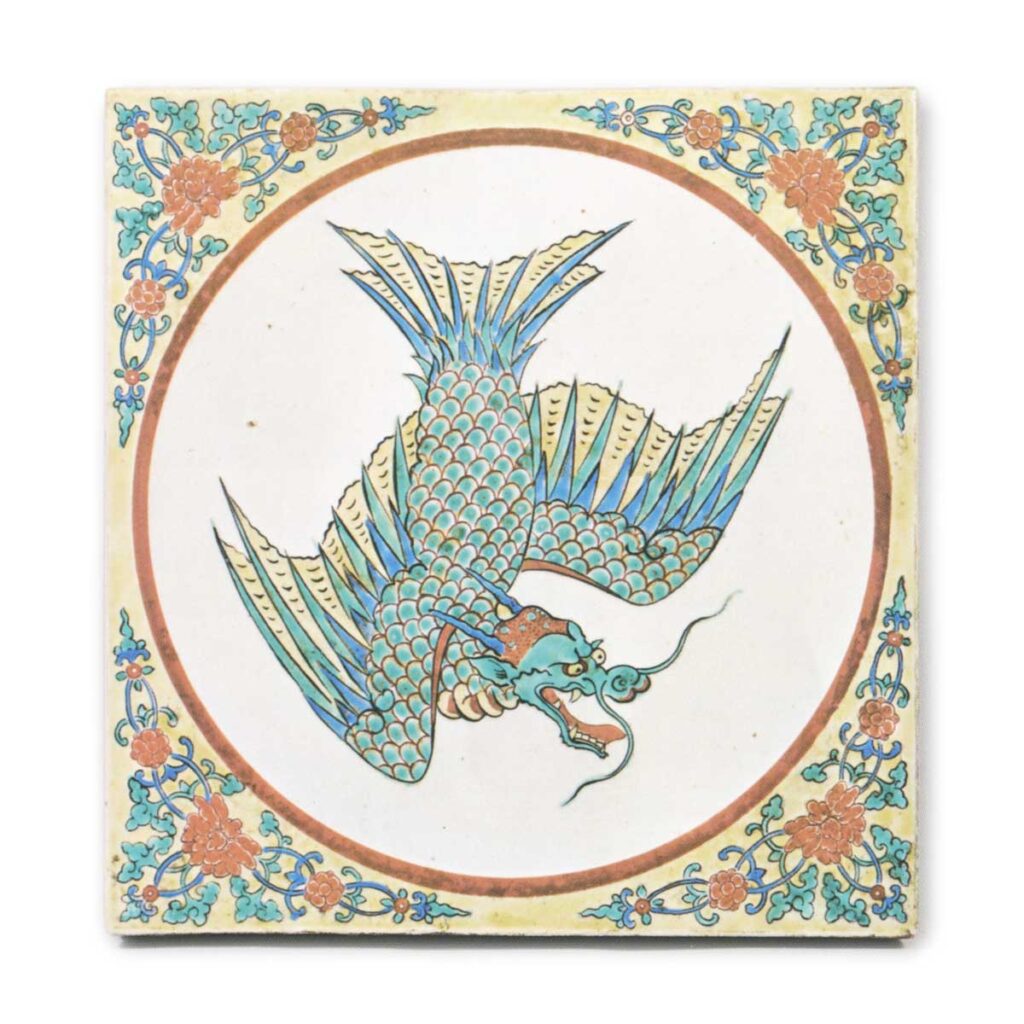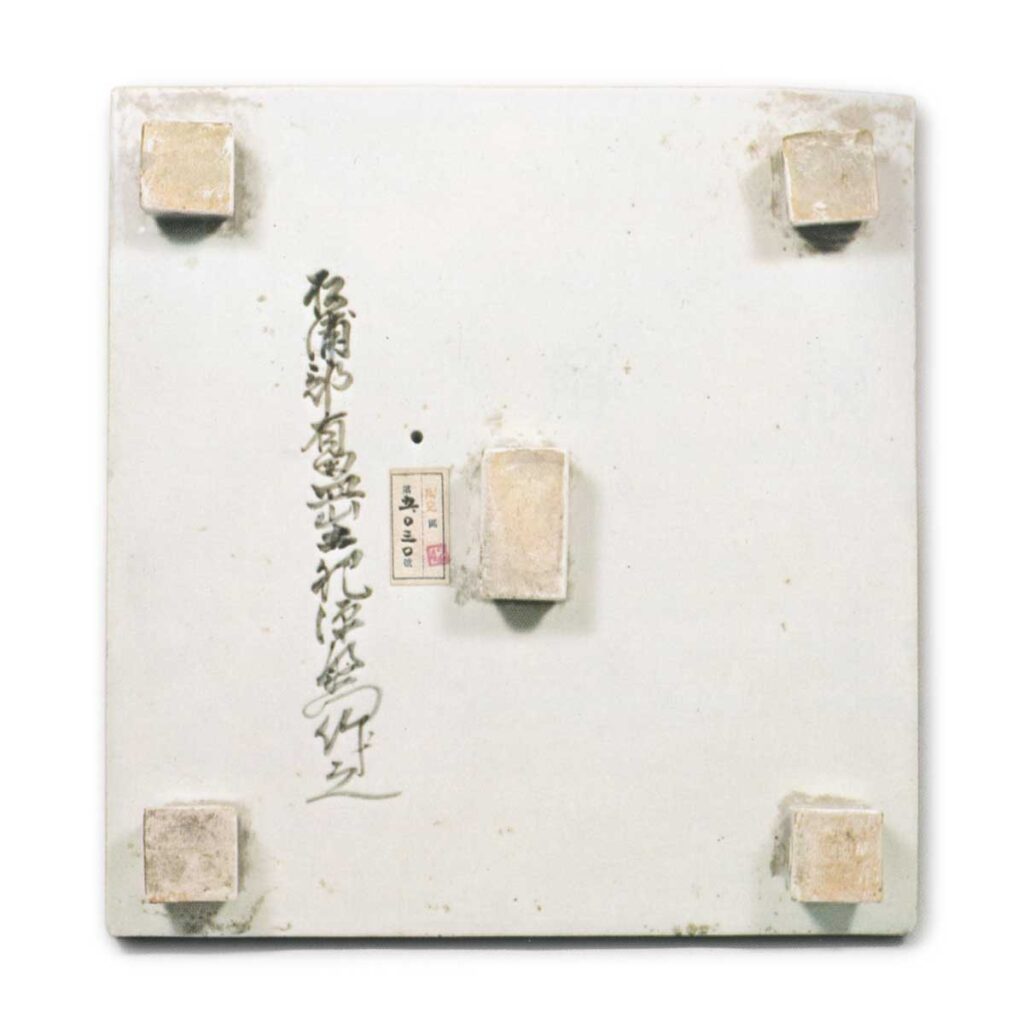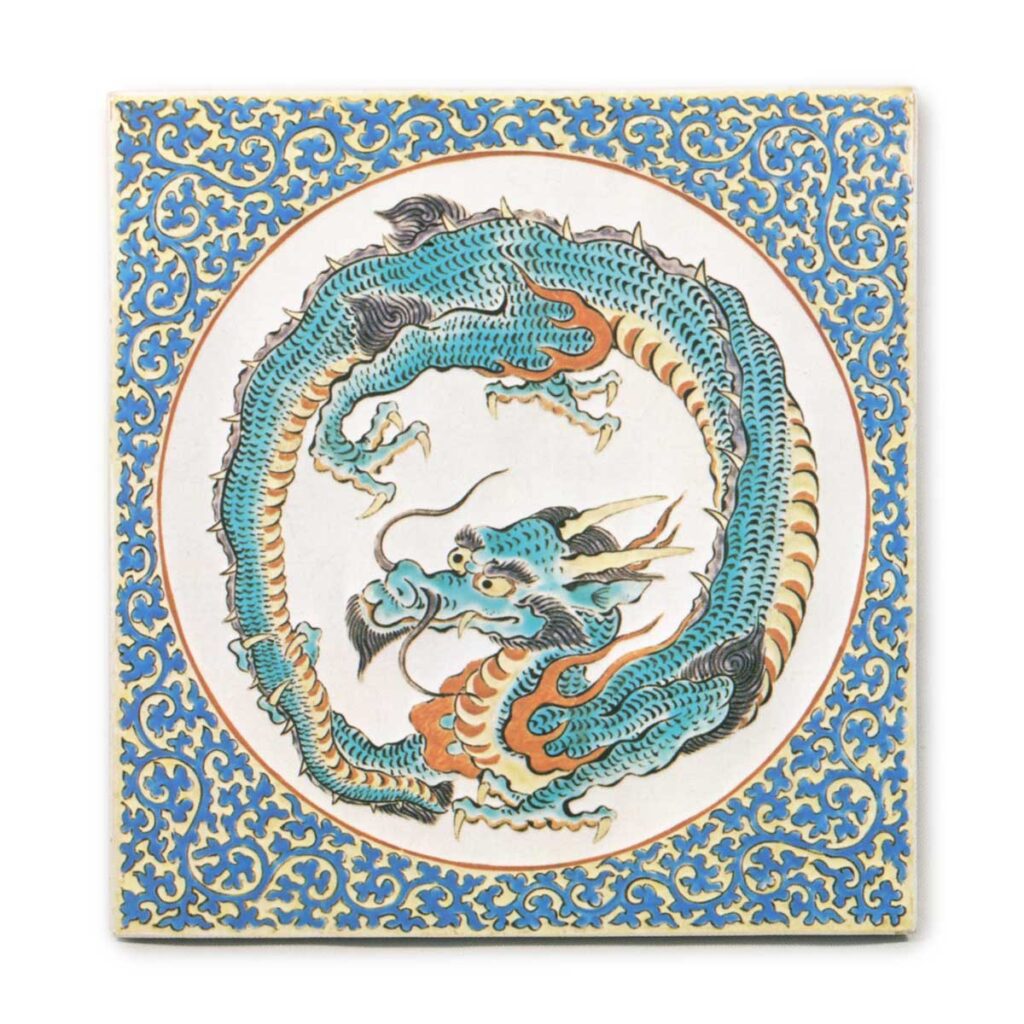
Diameter 25.0×24.2cm
Tokyo National Museum

Diameter 25.0×24.2cm
Tokyo National Museum

Diameter 25.8×24.7cm
These ceramic panels are valuable materials that allow us to estimate the lower limit of the Kakiemon style, for which there are few reliable data to estimate the date of production.
The porcelain tablet is in the same style as the porcelain tablet inlaid in the waist wall of the Tenrin-zo at Nishi Honganji Temple in Kyoto, which is said to have been built in 1677 (Enpo 5) and was the sutra repository where the 14th abbot of Nishi Honganji, Jakunyo Shonin, stored the 1323 sutra scrolls that were opened by priest Tenkai. It is not known whether or not this type of ceramic tablet was adjusted in Enpo 5 to fit here. It is also not known whether or not this type of ceramic board was used for the lining of the building, but it is assumed that it was installed at the time of the Enpo erection. There are two types of ceramic panels: one with a circular window in the center of a square shape and an oryu dragon with wings inside, and the other with a dangyong design.
The ceramic board with the Oryu design in overglaze enamels is exactly the same as the two types of boards, and is therefore one of the materials that suggest a style of work from around 1677. The peony arabesques in the four corners are in the Kakiemon style, and on the reverse side of the board is the inscription “Arita Sarayama, Matsuura County, Arita, by Dohi Genzaemon” in underglaze blue, which is interesting because the inscription is written by Dohi Genzaemon on the porcelain body of a Kakiemon style overglaze enamel ware. Although we do not know the details of this artist, it is assumed that he was the owner of the tombstone of Kakiemon III, and that he was a kiln maker with close ties to the Sakaida family, since “Dohi Baba Ichimon” is written on the reverse side of the celadon tablets of the inkstone folding screen that have been handed down in the Kakiemon family. Therefore, the pieces called Kakiemon style are, in the strict sense of the word, mainly made by the Sakaida family, but also by the Dohi and Baba families, who were all engaged in the business. The ceramic board has convex legs attached to the center and four corners of the reverse side, and holes for eye nails are attached to the legs. The sides are carved with two lines and joints. Judging from its style, it does not seem to have been made for use in the same way as the current Tennrinzo.
The overglaze enamels with dragon and dragon-like dragon motifs on the reverse side of the ceramic plate are similar, but there is no inscription on the reverse side and the design on the front side is not peony arabesque but octopus arabesque. Since this design is not used in the Tennrinzo, it is not clear whether it was one of the samples of the period or whether it was made for use elsewhere.



